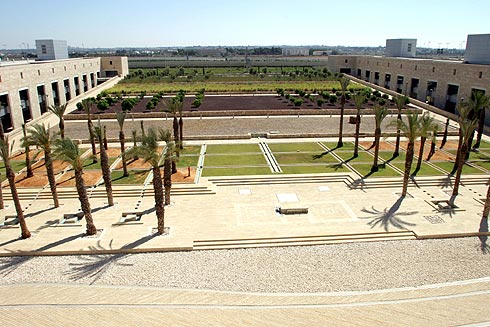In 1995, the team of Parsons Brinckerhoff and Rich & Associates were awarded the design of the new Ben Gurion Airport in Tel Aviv Israel. The project scope included the design of two (2) parking garages, a new roadway system, signage and security systems. We were also responsible for planning and designing state of the art access and revenue control systems, including vehicle count systems with dynamic signage.
The Rich & Associates’ team arrived a day or two later than the Parsons’ team and we all met at the same hotel in downtown Tel Aviv. Discussions that evening planned out the next day’s activities and included updates to some of the protocols during our stay. One piece of advice we were given was not to tip any of the waiters at any eating establishment by putting it on the tab because it was a common practice there to tip in cash.
The first meetings were held at the airport facility aviation department, and subsequent meetings were switched between aviation at the airport, and the engineering and architectural offices in downtown Tel Aviv. The local Engineer was Del and the local Architect was Shlomo Aronson & Associates. The whole stay in Tel Aviv during this and other trips, introduced both teams to a new type of security that we had not yet experienced in the states. For example, we were advised to be at the airport 3 hours prior to our flights scheduled departure so that all of our bags could be checked and we could be questioned. The roadway system on the way to the airport had a security checkpoint before you even entered the airport grounds. The team tended to drive together to the airport in the mornings, and during the evenings we would usually meet up to cover the days activity.
The initial design was to put the garage parallel to the terminal building which meant there would be a long façade of the garage facing the terminal. As more schemes were developed, the local architect decided that there should be a garden in this area so that all visitors in the baggage claim and transportation areas could view the garden.
To achieve this garden, we changed the design from one long garage, to two garages perpendicular to one another so that the garden could be developed in between both garages.
In Israel during this time, everyone had military experience as both male and female citizens were required to serve. During a meeting in the local architect’s office, the architect was interrupted by his secretary who came in and told him that he was needed on the phone immediately. The architect came back into the meeting, put his pad down on the table and said he had to leave because his tank division was called up regarding something going on near the border. The architect had been called on to active duty and left the meeting immediately.
As part of the design of the garage facilities, we were responsible for the signage, the operating equipment, the functional planning, the lighting, and the security systems. We requested discussions with the security guards who were going to be active in the garage to go over security camera locations and the voice operated emergency systems. The security guards asked a question in the meeting about where to place the cars they towed, I told them we had space next to the garage to store these cars. Their response was “you don’t understand, the cars we tow tend to blow up, so we need an area with a blast fence around it to tow these cars!” Following that, we asked about additional security measures at the airport and it was pointed out that there were hatches in the walkways leading to the terminal building which opened up to an underground area. We asked what the underground area was for, they said it was a blast area for suspicious bags that had been left unattended or possibly contained explosives.
The conditions we were working under made for a very interesting project overall. The trips back and forth to Tel Aviv, each trip lasting approximately one to two weeks, gave me some personal time to explore many things in Israel and for that I am very grateful. One experience in particular that I really enjoyed, was taking a cable car up the side of a mountain in Southern Israel to tour Masada and then stopping to go in to The Dead Sea. I was also able to explore cities like Bethlehem, Jerusalem, and Jericho, which really made this project a once in a lifetime experience. In review of this project, I started to reminisce on other projects I have done, and realized that I have had the pleasure of traveling to 14 different countries to work on projects. There were about 6 other countries that we had done designs for which I did not travel to, one of those countries being Saudi Arabia. I was advised not to go to Saudi Arabia because my passport had shown many visits to Israel.



